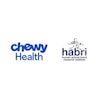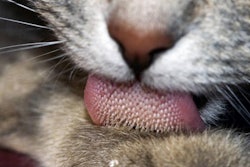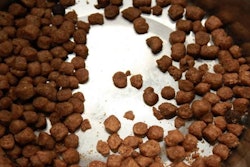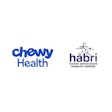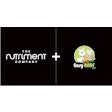
While the global pet food industry’s current structure reflects the dominant US market, as diversification increases there are several other markets making up ever-larger pieces of the worldwide pie.
North America
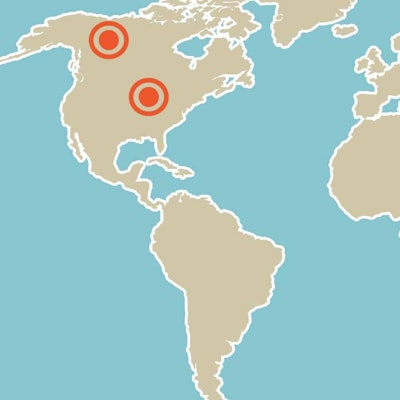
It’s common knowledge that the United States boasts the most mature pet food market in the world. With more than 120 companies (We have 118 in our Top Companies Pet Food Database, but we know that’s not all of them!), nearly 300 manufacturing facilities (according to the most recent Economic Census conducted in 2012) and nearly 17,000 employees working at those facilities (to say nothing of the staff employed in support of those facilities), the US pet food industry has clearly earned its reputation as not just a dominating market in North America, but a global force, as well.
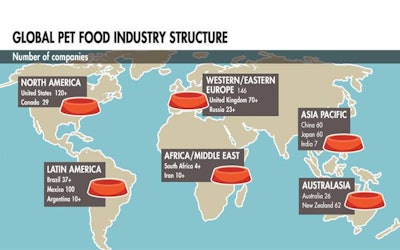
According to available data, gathered from various country and regional pet food industry associations, official data-analysis sources, and Petfood Industry's own Top Companies database, the global pet food landscape is diverse and growing.
In 2015, the US accounted for 38% of the roughly US$70 billion global pet food market, no surprise when the number of dogs and cats in the country (178 million) averages out to one pet for every other person in the country’s population of 354 million. In line with its mature status, the US pet food market is expected to retain a 3.5% compound annual growth rate (CAGR) through 2017.
But the US isn’t alone in the North American market, and while Canada claims a far smaller piece of the global pet food pie, it continues to grow as the industry further matures and diversifies overall. The country’s 29 pet food companies (according to the Pet Food Association of Canada and our own Top Companies database) did US$3 billion in business in 2015 and employ 2,050 people. More than 480,000 metric tons of pet food is sold annually to feed the country’s 13.7 million cat and dogs, and over 70% of that food is purchased through pet shops, superstores and grocery chains.
Western and Eastern Europe
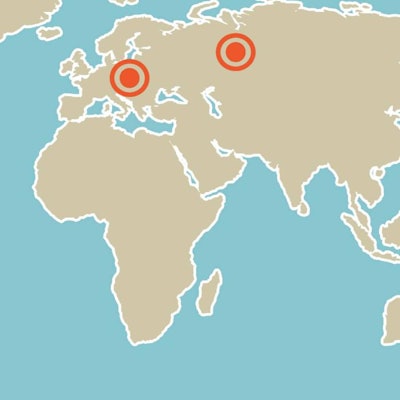
According to FEDIAF, the umbrella association for European countries’ various pet food industry associations (21 countries in total represented), pet food products in Europe resulted in an annual turnover of about €15 billion (US$16.7 billion) in 2014—9 million metric tons of pet food. With at least 146 pet food companies (according to our Top Companies Database), the vast majority of which are in Western Europe, owning 650 plants, direct employment in the European pet food industry came in at 80,000 in 2014, with another 700,000 indirectly employed via positions in the veterinary field, pet specialty stores, suppliers, trade shows, etc.
The second-largest global pet food market—together, Europe and the US make up roughly 70% of the total market—is expected to have a CAGR of 4.4% through 2017. With 75 million pet-owning households in 2014, this is no surprise. There are more than 81 million dogs and more than 63 million cats in Europe. On the canine side, Russia comes out on top, with 15.9 million dogs. The United Kingdom (8.5 million), Poland (7.6 million), France (7.3 million), Italy (7.0 million) and Germany (6.8 million) also make up significant portions of the pet dog population, according to FEDIAF data. On the feline side, Russia comes out on top again, with 21.7 million pet cats. France (12.7 million), Germany (11.8 million), Italy (7.5 million) and the UK (7.4 million) help round out significant portions of the population, marking key opportunities to continue growth in the European region.
Of course, Russia is a developing market to watch all on its own. In 2015, the Eastern European country contributed US$1.5 billion to the total global pet food market. That puts it in a tie with Spain’s market (also US$1.5 billion) and just below Italy (US$2.6 billion). While not yet ready to compete with the UK’s market (US$4.4 billion), it’s clear that there are plenty of opportunities to be had in that part of the world. Even hampered by years of economic and geopolitical unrest, Russia remains the top player in the Eastern European pet food market.
Asia Pacific
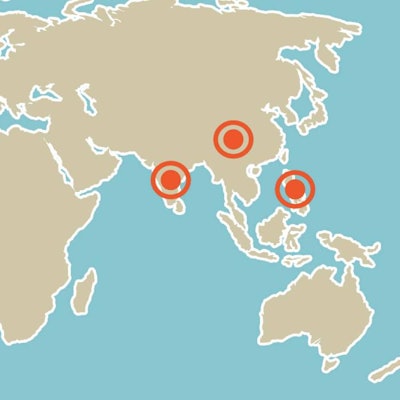
The Asia-Pacific region is home to several developing pet food markets, all of which have increased in interest over the last several years as rising incomes and globalization make it more lucrative to do business in the area. With at least 120 companies (according to industry data) functioning in China and Japan alone, and others setting up shop in India, Thailand, Korea and the Philippines, the markets are expected to continue to grow.
Japan has been a slower growing market, reaching US$6 billion in pet food sales in 2015. China is growing more quickly but also has more growing to do: US$1.3 billion in 2015, according to GfK data. But the country is definitely on its way up. As the middle class grows and more people turn to pets (particularly small dogs and cats, which are more portable and easier to manage in smaller apartments) for companionship, the opportunities for pet food companies looking to expand internationally will continue to increase. It doesn’t hurt that China is in the top three globally for both dog and cat ownership: 27.4 million pet dogs (behind the US and Brazil) and 58.1 pet cats (behind the US), according to GfK. The country is also expected to represent 25% of global market growth by 2020.
India is another developing market to watch, with a lot of room for growth. In 2015, the country claimed US$200 million of the pet food market, and an increase in disposable income means an increase in pet ownership—breaking into the top ten in canine ownership with 10.2 million pet dogs, ahead of Argentina, the UK and France, according to GfK data.
Latin America (including South America)
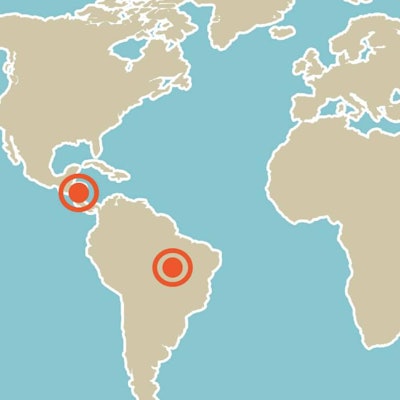
Brazil is the largest pet food market in Latin America in terms of sales, with US$5 billion in pet food sales in 2015. It’s also home to at least 37 pet food companies, according to our database, the second-largest pet dog population in the world (35.7 million) and the fourth-largest pet cat population (12.5 million).
Mexico comes in second in Latin America for pet food, at US$2.28 billion in 2015, but the country has far more pet food companies—roughly 100—making up its industry, and ranks among the top 10 pet care markets globally, as well as one of the fastest-growing. Dog food dominates 96% of the market—US$2.195 billion versus cat food’s US$91.24 million—and dog and cat food together produce about 1 million metric tons in volume per year.
Considering it’s still a growing market, one of the most interesting things about Mexico is its adoption of the trends prevailing in the more developed markets. According to a recent presentation held at Foro Mexico 2016, superpremium products account for 19% of dog food sales, with premium products at 66%; standard (economy-priced) products weigh in at only 15%. For cat food, the breakdown is superpremium at 7% and premium at 93%. Of course, the Mexican market is still characterized by a relatively low percentage of pets eating commercial pet food: less than 40% for dogs, according to Euromonitor. Those pets that are fed commercial products probably live with owners in the larger cities of Mexico, who likely have the incomes to afford higher-priced products, thus driving the premiumization trend seen in larger markets like the US.
While Brazil and Mexico make up the larger portion of the Latin America pet food market, there are other countries in play: for example, Argentina brought in US$1 billion in 2015, and hosts at least 10 pet food companies, according to our Top Companies database. Other countries with growing markets within Latin America include Chile, Colombia, Costa Rica, Ecuador, El Salvador, Peru, Trinidad and Tobago, and Uruguay.
Australasia
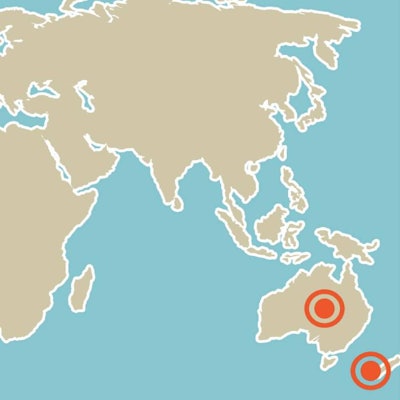
Australia alone is home to 26 pet food companies, according to industry data, and contributed US$2 billion to the global pet food market in 2015. It’s also fairly developed in terms of what Australians are feeding their pets: 40% to 69.9% of dogs are fed commercial pet food, and 60% to 79.9% of cats are fed the same, according to Euromonitor International data. The Australian pet food market can expect a CAGR of 2.94% until 2019, according to a recent report by TechSci Research.
In 2014, Mars Incorporated acquired the Iams and Eukanuba pet brands in Australia and New Zealand from Procter & Gamble, expanding its presence in the markets in those countries. There are over 8.5 million pet cats and dogs in the region, and 62 companies manufacturing pet food in the area, according to the New Zealand Petfood Manufacturers Association, making it a growing part of the market worth watching.
Africa and Middle East
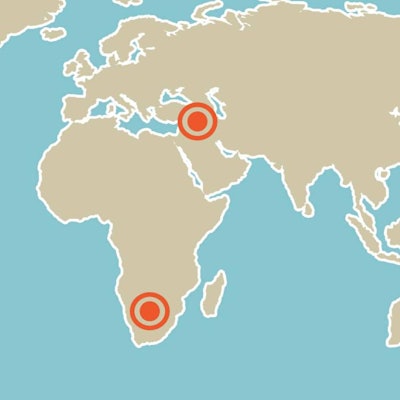
The Middle East and Africa are, by all accounts, developing markets in the pet food industry. There is little data on how much commercial pet food has entered into pet ownership in the region, but the data that is there is mostly low—South Africa is by far the most developed market, with 20% to 39.9% of dogs eating commercial pet food, and 60% to 79.9% of cats eating the same. South Africa’s total pet food market in 2015 brought in US$300 million—just US$100 million more than India, and less than the Czech Republic (US$325 million). Available country data in our Top Companies database shows four pet food companies operating in South Africa.
The Iranian pet food market has shown significant signs of growth in the last few years, reaching 700 metric tons and US$6 million in 2015, according to Persian Pet International. While a very small segment of the overall global industry, the numbers represent a significant rise in a single year. Right now, the company is importing largely from Germany and Italy, as sanctions have hampered its ability to trade with countries such as the US and UK. The market is forecast to reach 2,000 metric tons of pet food by 2020, according to the Iranian Ministry of Industry and Business.

